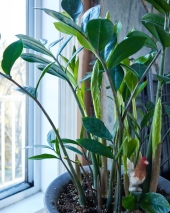
 4
4




Cargo bikes are cool
 3
3




"Them that don't know him don't like him and them that do sometimes don't know how to take him, he ain't wrong he's just different and his pride won't let him do the things to make you think he's right" - Ed Bruce (via Waylon and WIllie)
 9
9




“Action on behalf of life transforms. Because the relationship between self and the world is reciprocal, it is not a question of first getting enlightened or saved and then acting. As we work to heal the earth, the earth heals us.” ~ Robin Wall Kimmerer
 4
4




 3
3




 1
1




Visit Redhawk's soil series: https://permies.com/wiki/redhawk-soil
How permies.com works: https://permies.com/wiki/34193/permies-works-links-threads
 1
1




 3
3




Nothing ruins a neighborhood like paved roads and water lines.




Cargo bikes are cool
 1
1




Teresa said, "I was going to say maybe you have a frog deficiency, but then I remembered I've seen hummingbirds eating gnats. So maybe you have a hummingbird deficiency.
Invasive plants are Earth's way of insisting we notice her medicines. Stephen Herrod Buhner
Everyone learns what works by learning what doesn't work. Stephen Herrod Buhner




It was my friend's sundews I was thinking might be the most helpful from your description. I think she took some of those in for the winter, but I will check.Edward Norton wrote:I was initially thinking about sundews - Drosera family.
Visit Redhawk's soil series: https://permies.com/wiki/redhawk-soil
How permies.com works: https://permies.com/wiki/34193/permies-works-links-threads
 1
1




Visit Redhawk's soil series: https://permies.com/wiki/redhawk-soil
How permies.com works: https://permies.com/wiki/34193/permies-works-links-threads
 1
1




Edward Norton wrote:Well reading all the replies has brought a big smile to my face!
I was initially thinking about sundews - Drosera family.
The European and North American verities hibernate, so not much good this time of year. There are ornamental sub-tropical species that I thought might be the answer if they can deal with the relatively cool but not cold temperatures.
I’ll continue to investigate and look into pitcher plants. I’ll probably avoid venus fly traps.
Cheers
 1
1




 2
2





|
All praise hypno-ad
Rocket Mass Heater Plans: Annex 6
https://permies.com/wiki/138231/Rocket-Mass-Heater-Plans-Annex
|


